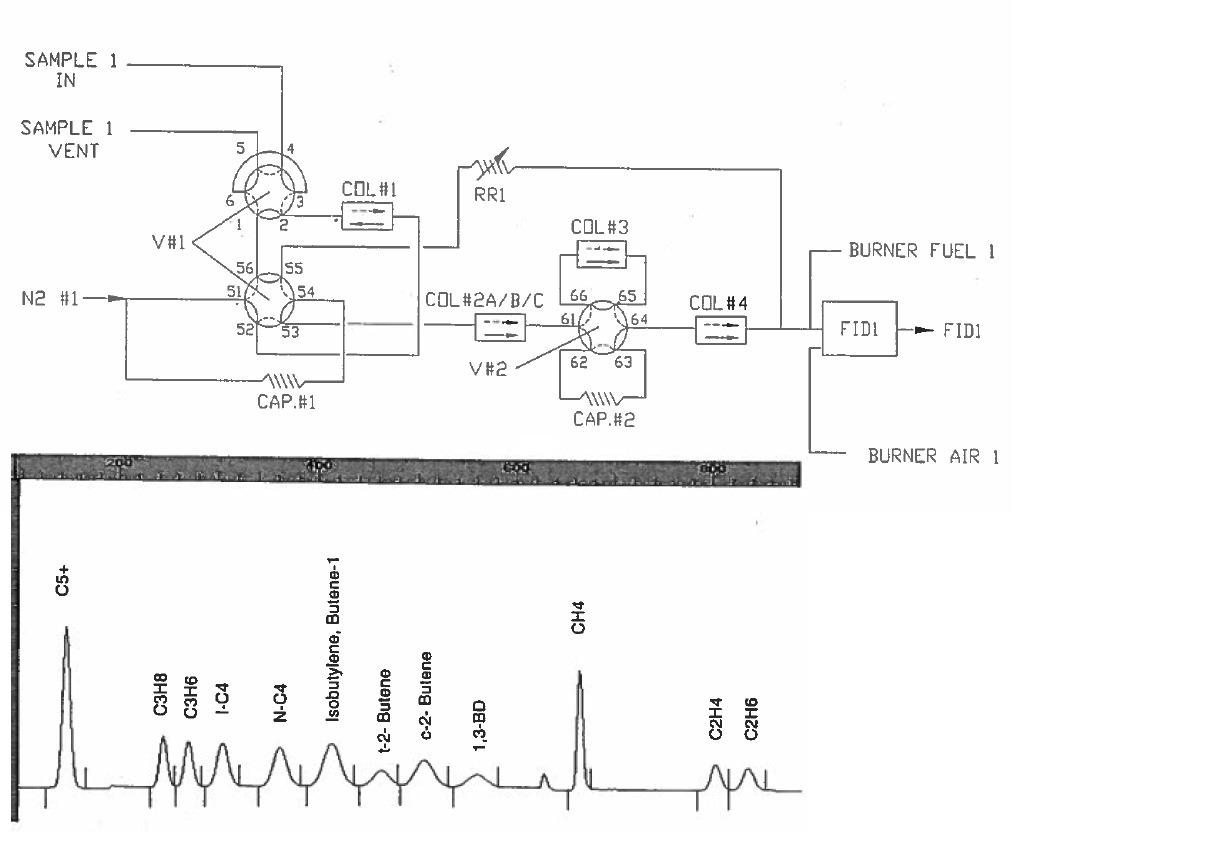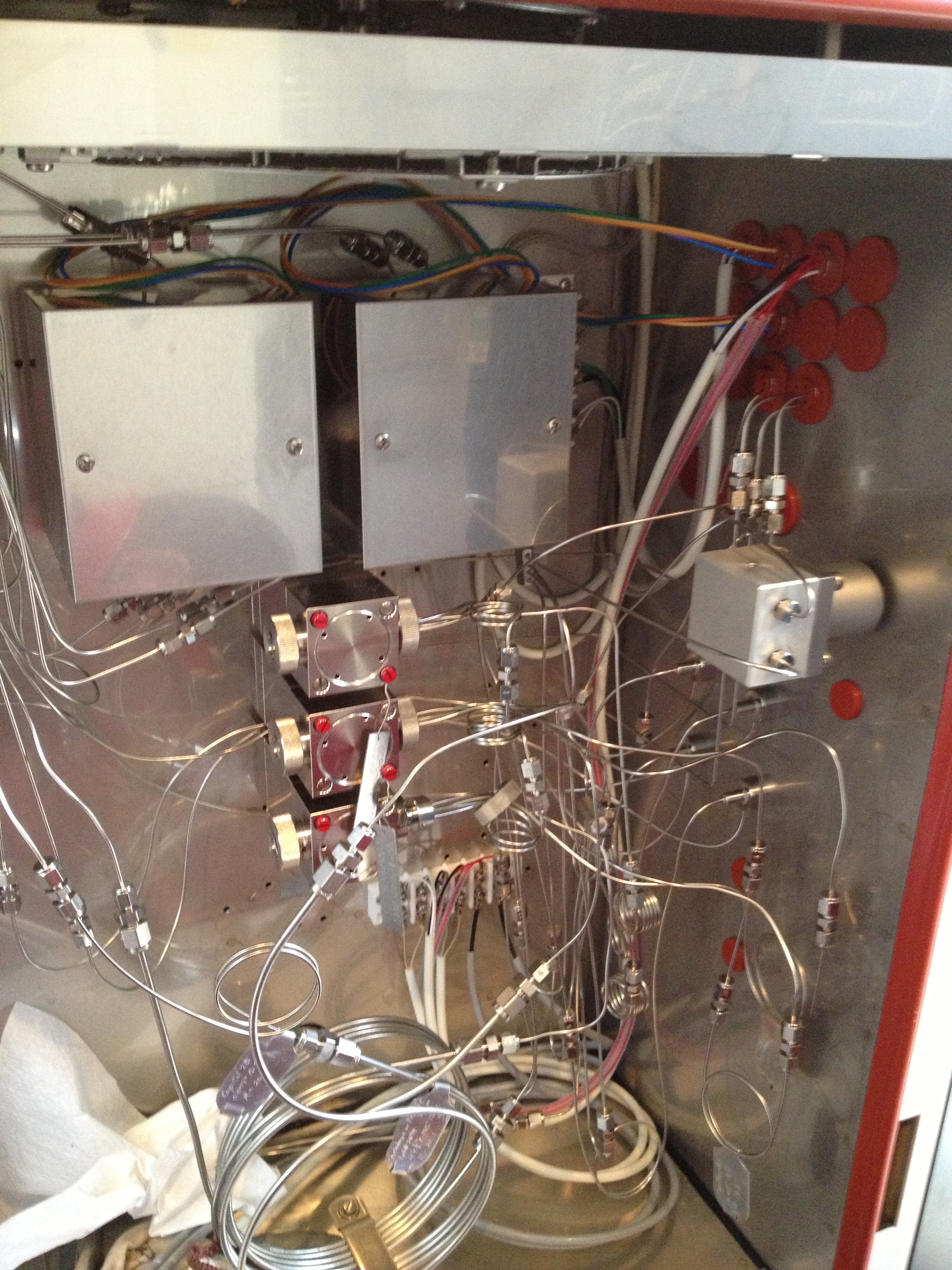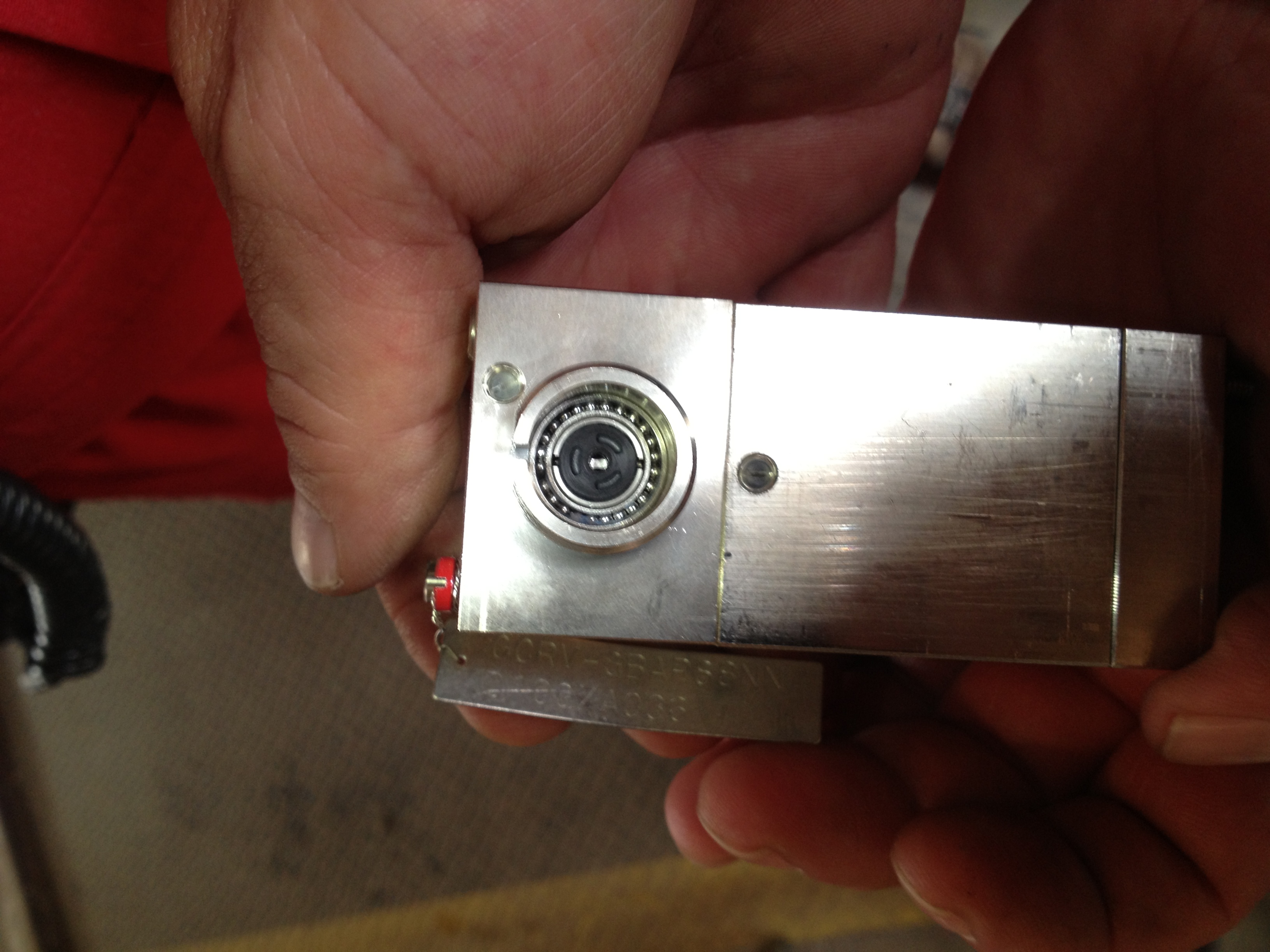Yokogawa HRVOC
My adventures in the analyzer world have now placed me in a spot where I will be working on Yokogawa G.C.'s Let's take a look at a CTW HRVOC analyzer and break down how they are doing their business.
Look at the Chromatagram. The first peak to come out is C5+ so what does that tell you? They are calling your sample valve and the other valve #1. We are circulating fresh sample untill it is time to inject. Valves ON. Carrier will sweep the sample loop going in on 51 to 56 out to 1 to 6 through the loop pushing sample in 3 to 2 out to column 1. The super lights will haul ass through with the mids right behind them. The C5+ are too fat and make it just into column 1. Lights come into Valve #1 on 52 to 53 out to column 2 out to Valve #2on 61 the valve is on so the lights go to 66 and start into column 3. At time 82 seconds Valve #1 turns off. Carrier coming in on 51 will now flow to 52 out and through the nose of column 1. Those fat ass C5+ will now be turned around and backflushed out of the column into valve on 2 then 1 and down to 56 to 55 now going through restrictor RR1 and final stop at the detector.
While all of this is going on, our super lights have entered column #3 and it has slowed them to a crawl and seperating them. As soon as we have C1, & C2's in column #3 we will turn Valve #2 off at 185 seconds. Our C3's and C4's will be eluting out of column #2 an entering valve #2 on 61 to 62 and through capillary #2 in on 63 to 64 and out to column #4 for final seperation. They will elute with C3's and then C4's (see chromatagram) with the final one being 1,3 BD. At time 620 seconds we will release the trap. By turning on Valve #2 our carrier gas will enter on 61 to 66 and push our lights out of column #3 to 65 then 64 and onto column #4 where they will elute out and to the FID with methane, ethylene and finally ethane finishing our chromatagram.
As you can see we are using N2 as our carrier. This is ok since we use H2 and Air to maintain our flame in the FID. As we all know the only thing an FID can see is hydrocarbons. We burn their little legs off. How many legs per carbon ? ? ? ? ? If you have been paying attention in my class then you know that it's 4.
Take a look at their valves. See below the cuts in the disc. It's just like the cuts on a rotor in a valco valve. It's kinda a combination of a valco and a slider valve.
___________________________


